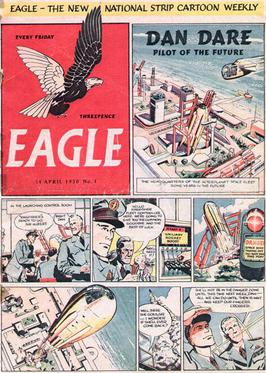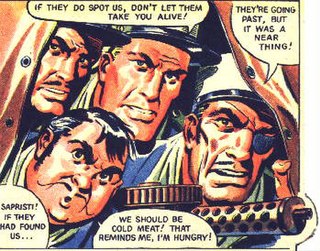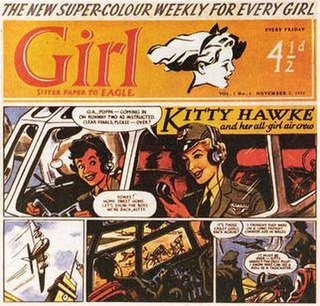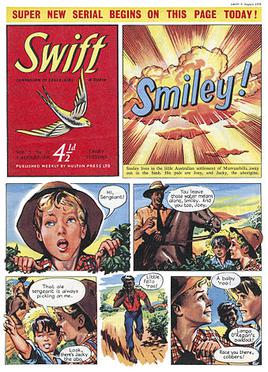
Eagle was a British children's comics periodical, first published from 1950 to 1969, and then in a relaunched format from 1982 to 1994. It was founded by Marcus Morris, an Anglican vicar from Lancashire. Morris edited a Southport parish magazine called The Anvil, but felt that the church was not communicating its message effectively. Simultaneously disillusioned with contemporary children's literature, he and Anvil artist Frank Hampson created a dummy comic based on Christian values. Morris proposed the idea to several Fleet Street publishers, with little success, until Hulton Press took it on.

Nick Carter is a fictional character who began as a dime novel private detective in 1886 and has appeared in a variety of formats over more than a century. The character was first conceived by Ormond G. Smith and created by John R. Coryell. Carter headlined his own magazine for years, and was then part of a long-running series of novels from 1964 to 1990. Films were created based on Carter in France, Czechoslovakia and Hollywood. Nick Carter has also appeared in many comic books and in radio programs.
Notable events of 1959 in comics. See also List of years in comics.

Martin Henry Hugh Aitchison was an illustrator for the Eagle comic from 1952 to 1963, and then one of the main illustrators for Ladybird Books from 1963 to 1990.
This is a timeline of significant events in comics in the 1920s.
This is a timeline of significant events in comics prior to the 20th century.
Notable events of 1981 in comics. See also List of years in comics.
Notable events of 1982 in comics. See also List of years in comics.
Notable events of 1976 in comics. See also List of years in comics. This is a list of comics-related events in 1976.
Notable events of 1983 in comics. See also List of years in comics.
Notable events of 1966 in comics. See also List of years in comics.
Notable events of 1967 in comics. See also List of years in comics.
Notable events of 1933 in comics. See also List of years in comics.

Richard E. Jennings was a comic book artist who lived and worked in the United Kingdom.

Girl was the name of two weekly comics magazines for girls in the United Kingdom.

Swift was a British weekly comics magazine published by in the UK as a junior companion to the Eagle.

Princess Tina was a weekly British girls' comic published from autumn 1967 to summer 1973 by the International Publishing Company, initially under the Fleetway Publications banner. Two comics, Princess and Tina, were merged to form Princess Tina; another title, Penelope, was merged into Princess Tina in 1969; the publication itself came to an end when it was merged into Pink.
Celebrity comics are comics based on the fame and popularity of a celebrity. They are a byproduct of merchandising around a certain media star or franchise and have existed since the mass media and comics came into existence in the 19th century. Celebrity comics are usually not held in high esteem by critics, because of their purely commercial nature. They are solely created to capitalize on media trends and therefore published so quickly and cheaply that drawings and narratives tend to be of very low quality.







